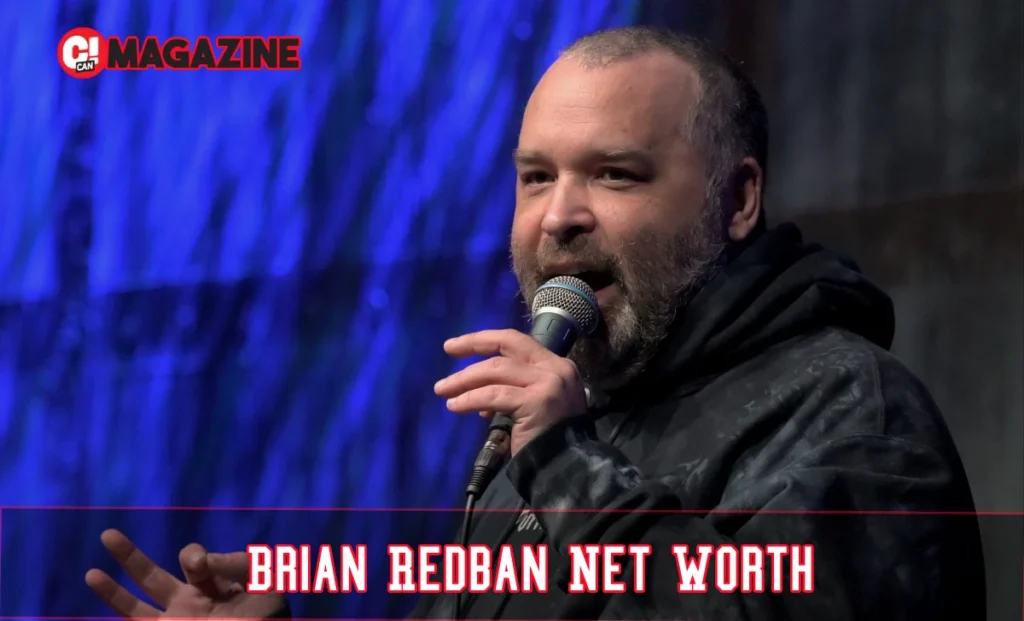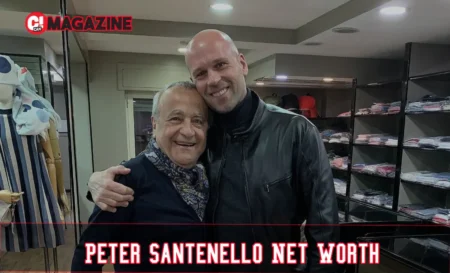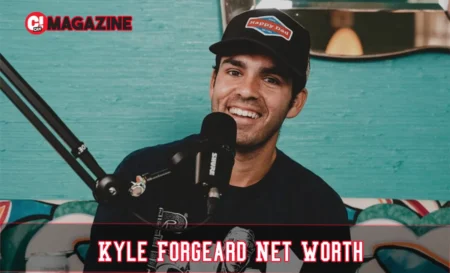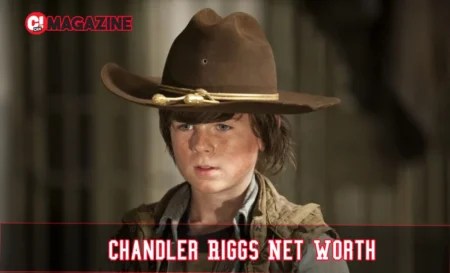Brian Redban net worth stands at $1.5 million in 2025. This figure stems from his podcast production, comedy club ownership, and live events. Key earners include co-hosting Kill Tony, running the Deathsquad network, and past work on The Joe Rogan Experience. His wealth reflects steady growth in digital comedy, with assets like a Texas home and Tesla adding to the total.
You might wonder how a guy who started in tech support ended up shaping one of comedy’s biggest platforms. Brian Redban did just that, turning behind-the-scenes skills into a solid financial foundation. As a producer and comedian, he’s built a career that blends tech savvy with sharp humor, influencing podcasts that millions tune into weekly.
This article breaks down his path, earnings, and what keeps his finances ticking. You’ll see exactly how he stacks up in the comedy world and what lessons you can pull for your own side hustles in content creation. By the end, you’ll have a clear picture of his 2025 net worth and why it’s poised for more.
Who Is Brian Redban?
Picture this: a self-taught video editor from Ohio lands in Los Angeles, mic in hand, and helps launch a podcast empire. That’s Brian Redban in a nutshell. Born Brian Reichle on August 4, 1974, in Columbus, he grew up in a split household—his parents divorced early, leaving him and his sister Erin navigating separate paths. High school at Worthington Kilbourne wrapped in 1993, followed by community college classes that sparked his interest in media.
But formal training? Not his style. Redban dove into video editing on his own, starting with odd jobs at a computer store. That grind led him to comedy clubs, where he filmed sets for up-and-comers. His big break came from meeting Joe Rogan, who needed someone reliable for tour videos. What started as a gig turned into a partnership that redefined podcasting.
Today, at 51, Redban lives in Austin, Texas, co-owning the Sunset Strip Comedy Club since 2023. He’s not just the guy behind the board—he’s a co-host on Kill Tony, cracking jokes alongside Tony Hinchcliffe. Fans know him for that deadpan delivery and tech wizardry that keep shows running smoothly. If you’re into podcasts, you’ve likely laughed at something he produced without realizing it.
His story hits home if you’re bootstrapping a creative career. Redban shows how spotting opportunities in chaos—like early streaming tech—pays off. No silver spoon, just persistence and a knack for what clicks with audiences.
Brian Redban’s Career Journey
Redban’s timeline reads like a comedy script with plot twists. Early 2000s, he was in South Dakota, troubleshooting computers for Gateway 2000. Boredom hits, so he quits for LA, chasing video work. By 2004, he founds Talking Monkey Productions, cranking out clips for comedians like Doug Stanhope. That’s when Rogan taps him for tour footage—simple shoots that evolve into full production.
Fast forward to December 2009: The Joe Rogan Experience drops, with Redban as the original producer. He handles everything—recording, editing, even injecting humor during episodes. Those first years? Pure hustle. The show hits 11 million views in a year, thanks to his setup of live streaming before it was standard. By 2013, Jamie Vernon steps in as full-time producer, but Redban’s blueprint sticks.
He doesn’t stop there. August 2009 sees the launch of Deathsquad, his podcast network that nurtures talents like Tom Segura and Christina Pazsitzky. Your Mom’s House finds a home there in 2010. Then, Kill Tony in 2013—Redban co-hosts, turning open-mic nights into viral gold. Live shows pack venues, from LA’s Comedy Store to Austin’s Mothership.
Here’s the catch: Redban’s edge is diversification. While JRE skyrocketed Rogan’s profile, Redban built his own lane with Ice House Chronicles and Brode & Esther. Awards roll in—a 2012 Shorty nomination, a Stitcher win for JRE in 2014. Films like The Naughty Show (2011) and The Cultural High (2014) add director creds.
For you, eyeing a media gig, Redban’s moves highlight timing. He jumped on podcasts when radio ruled, proving early adoption beats waiting for permission.
Breaking Down Brian Redban’s Income Streams
Ever curious how podcast pros turn mics into millions? Redban’s earnings mix steady gigs with smart bets. His portfolio spreads risk, pulling from production fees, event cuts, and ownership stakes. Let’s unpack the main drivers.
First, podcast production anchors it all. Past JRE work netted solid contracts—think $50,000-$100,000 annually in those peak years, per industry benchmarks for top producers. Now, Deathsquad generates ad revenue and sponsorships. With shows like Kill Tony pulling 500,000+ downloads per episode, that’s $20,000-$30,000 monthly from ads alone, split among hosts.
Live events amp it up. Kill Tony tours sell out 300-seat rooms at $25-$50 tickets, yielding $10,000-$15,000 per show after costs. Redban’s cut? Around 30%, or $3,000-$5,000 nightly. Add comedy club ownership: Sunset Strip in Austin books acts weekly, with Redban’s share from door sales and merch hitting $100,000 yearly.
Digital content rounds it out. Merch via Deathsquad—tees, hats—moves $50,000 annually. Virtual streams during lockdowns added $20,000 in one-off boosts. Investments? Subtle, like podcast gear flips, but they compound.
| Income Source | Estimated Annual Earnings | Key Notes |
|---|---|---|
| Podcast Production (Deathsquad, Kill Tony) | $200,000-$300,000 | Ad revenue, sponsorships, scale with downloads |
| Live Shows & Tours | $100,000-$150,000 | Ticket sales, host fees; 20-30 events/year |
| Comedy Club Ownership (Sunset Strip) | $80,000-$120,000 | Profit share from bookings, bar sales |
| Merch & Digital Content | $40,000-$60,000 | Online sales, streams, low overhead |
| Other (Productions, Investments) | $20,000-$50,000 | Film residuals, gear resales |
This table shows why his setup works for you. Unlike one-hit wonders, Redban’s streams buffer dips—like pandemic slowdowns. Focus on multiples if you’re building online.
But wait, taxes and expenses bite. Production costs eat 20-30%, leaving take-home closer to 70%. Still, it’s a blueprint for creators: layer income before scaling one lane.
Brian Redban Net Worth in 2025
Pinpointing net worth means sifting estimates, but 2025 data points to $1.5 million for Redban. That’s up from $1 million in 2023, fueled by Austin’s comedy boom and Deathsquad’s expansion. Sources like industry trackers peg it there, factoring in liquid assets, real estate, and business equity.
Break it down: Cash and investments hover at $500,000-$700,000 from steady flows. Real estate shines—a $440,000 home in Pflugerville, Texas, bought post-move, now valued at $500,000 with appreciation. Vehicles? His 2019 Tesla Model X, originally $115,000, holds $80,000 resale.
Business stakes are at up. Deathsquad’s network value? $400,000 in equity, given 20+ active shows. Sunset Strip co-ownership adds $200,000, as Austin venues thrive post-2023 openings. Debts? Minimal—Redban avoids flash, keeping overhead lean.
Compared to peers, he’s mid-pack. Rogan’s $200 million dwarfs it, but Redban’s slice from early JRE equity helped seed Deathsquad. Tony Hinchcliffe, Kill Tony partner, mirrors at $1-2 million. Redban’s edge? Tech foresight, like early YouTube integrations.
You gain from this transparency. If net worth tracking motivates your goals, Redban’s climb stresses equity over salary. Build assets that grow quietly.
Personal Life and Investments
Redban guards his off-mic world tight, but glimpses reveal a grounded guy. He’s been with Janice Min, a marketing pro of Korean-American roots, for years—no ring yet, but she pops up on podcasts, trading laughs. They split time between LA and Austin, prioritizing low-key hangs over spotlights.
Family ties? Distant but fond. Post-divorce, he reconnected with mom Mary and dad Gary, a research engineer. Sister Erin’s out of the public eye. Redban’s straight, debunking old rumors with casual nods in episodes.
Investments are practical. Beyond the Tesla—chosen for eco-tech vibes— he’s into podcast tools, reselling mics and boards for quick flips. No wild stocks; he favors real estate, eyeing Austin properties as comedy hubs grow. That Pflugerville pad? A smart buy in 2020, up 15% since.
Health-wise, he’s open about tattoos—sleeves from comedy tour ink sessions—and skips smoking, crediting clean living for stamina. At 5’10” and 170 pounds, he stays fit via gym routines, balancing late-night records.
For you, his approach simplifies wealth building. Tie investments to passions—Redban’s gear buys fuel work, not just profit. It keeps life aligned, dodging burnout.
Future Outlook for Brian Redban’s Wealth
What’s next for Redban’s bank account? Podcasting’s exploding—global market hits $4 billion by 2026—so his networks stand to gain. Kill Tony’s Netflix specials could double live earnings, pushing $200,000+ per deal. Sunset Strip expansions, like merch lines, add $50,000 yearly.
Risks lurk: Platform shifts, like X’s algorithm tweaks, could trim ad bucks 10-20%. But Redban adapts—virtual events proved that in 2020. Projections? Net worth climbs to $2-2.5 million by 2027, if he scales Deathsquad internationally.
Industry ripples help. Austin’s scene draws Netflix scouts, boosting club value. Collaborations with Rogan alums keep doors open. Redban is betting on AI editing tools next, cutting production time by 30%.
You can borrow this foresight. Scan trends—podcasting’s your ticket if comedy calls. Redban’s path proves steady plays win over gambles.
Brian Redban’s net worth in 2025 captures a career of quiet builds. From Ohio basements to Austin stages, he turned tech into laughs that pay. His $1.5 million isn’t flashy, but it’s real—rooted in networks that outlast trends. If you’re chasing similar wins, start with one solid partnership. Redban did, and it changed everything.







